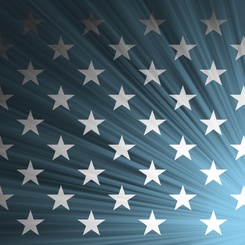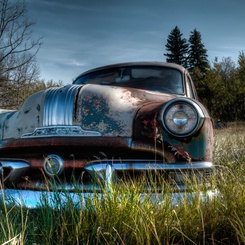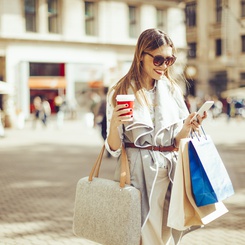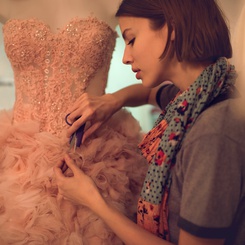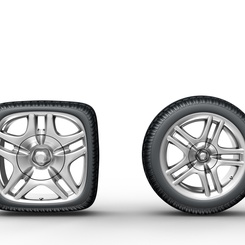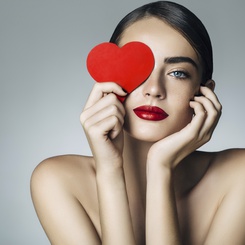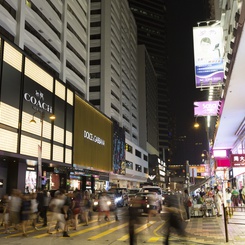Consumers used to let brands do the driving. They would get into the back-seat, so to speak, and let the brands lead the way. Each brand had a story to tell, and by choosing one over another, consumers were effectively buying into one brand’s narrative and letting it speak on their behalf. A purchase was a form of self-expression. One might say you were what you bought.
Today’s consumers, on the other hand, want to take the wheel. With a wealth of knowledge at their fingertips and the world at their feet, they’re telling brands where they want to go and how they want to get there. Of course, luxury consumers are still looking for craftsmanship, functionality and design. But, more than ever before, they’re also looking for a shared experience with their favorite brands.
This shift, as consumers spend less money on things and more on having experiences, represents a critical challenge for luxury brands. Their consumers are expecting more than just the best quality, so luxury brands will need to give them the experience they’re looking for, whether online or in stores. In other words, what we call ‘experiential marketing’ has become a must.
So here are the three keys to engaging today’s luxury consumers through experiential marketing...
Speak to their hearts: delight them!
People used to experience the world in superficial ways. Travel was about seeing many countries for short stays and getting snapshots of the top attractions. Luxury travelers tended to stay in five-star hotels that offered rather uniform, European-style service, regardless of the location. Shopping abroad often meant going into the same European boutiques found in most major metropoles around the globe.
Today, however, millennials are driving major changes in the travel and retail arenas. They’re searching for authenticity: a local, in-depth experience outside the beaten path. Millennials are more likely to stay at an Airbnb to experience the city like a local and search out foods, wines and unique products made by local artisans. They want to be immersed in an experience that they’ll carry in their hearts for a lifetime.
How does this translate to luxury retail?
The DFS Department Store in Venice, Italy, offers us a striking example of experiential marketing that helps brands speak to the heart of consumers. In the restored and revitalized Fondaco dei Tedeschi, one of the largest buildings in Venice, architects Rem Koolhaas and Jamie Fobert have meticulously respected Venice’s unique heritage while integrating touches of modernity. With an entire floor dedicated to exhibitions and events open to the public, they’ve created a new cultural hub for Venetians and tourists alike. You don’t just go to shop, you go to be immersed in an experience.
Art speaks to observers on an emotional level - in fact, studies have found that exposure to art can even reduce stress! - and piques curiosity: today’s consumer wants to learn and understand the artistic process. Art offers a powerful vector through which to speak to the hearts of consumers.
Some brands have launched dedicated museums, like the Louis Vuitton Foundation in Paris, for example, which makes art an integral part of Louis Vuitton brand storytelling. Bernard Arnaud, CEO of LVMH Group, explains that with the Louis Vuitton Foundation, “we wanted to present Paris with an extraordinary space for art and culture”. The Christian Dior Exhibit at the Musée des arts décoratifs, offers another striking example of art taking a central place in a brand’s ecosystem. This exhibit also helps legitimize the founder as an artist in his own right, and reinforces the idea that art and luxury go hand-in-hand.
Speak to their minds – Entertain them!
Storytelling is one of the best ways to engage consumers. Today’s consumers are hungry to learn about the history of each brand, their creative processes, and their artistic inspirations. They want to be engaged on an intellectual level, both in-stores and online. This growing desire translates to a burgeoning “content craze”. Content is indeed key, but it also needs to be credible, authentic, and unique.
Visual storytelling is particularly powerful. Images, for example, offer a kind of shortcut to the brain: images are processed by the human brain 60,000 times faster than words and are more readily memorized. Videos can be even more effective: people tend to spend five times more time looking at videos than static images. Plus, when you show a video, studies show that there is much better recall of the brand. Even very short video content - like those shared using applications such as Boomerang - can be incredibly effective. Storytelling - whether through relayed anecdotes, historical images, or bite-size videos - takes consumers on a journey of discovery, even if that journey was only a few seconds long.
This immersive experience can also be created in brick and mortar stores. Christian Dior, for example, used VR headsets to offer their clients a behind-the-scenes (and front row!) peek at their latest fashion shows and collections. Following the same standards of excellence met by the Dior workshops, “Dior Eyes” is an ultra-immersive virtual reality headset that uses the latest technology. Featuring high-definition picture quality and holophonic sound, it allows a three-dimensional look behind the scenes of the brand with a 360-degree view that allows you to move around the brand’s virtual world.
Speak to their senses – Immerse them!
Finally, engaging today’s luxury consumers means stimulating all five senses. During a shopping experience, consumers should of course be invited to see the intricate detailing and feel the textures of fabrics, but smells and sounds are equally, if not more important. In fact, with all of the other senses people tend to think before they respond. With scent, on the other hand, our brain tends to respond automatically, on a subconscious level. A hint of Chanel Number 5 can bring the entire Chanel brand identity to mind, and the effect is even more powerful when combined with a visual cue like a logo or signature product like an iconic handbag.
Brands like Johnnie Walker (Diageo) are using this phenomenon to their advantage.The Johnnie Walker Sensorium, for example, immerses clients in an experience that engages their five senses as they discover the three Singleton whiskey flavors. As visitors move through the space, a red room highlights the berry flavors of the whiskey by using curved shapes and the sounds of bells ringing, for example. Elaborated as part of a marketing experiment at Oxford University, the sensorium has since become integrated into the marketing strategy for the brand. According to Professor Charles Spence, Head of Crossmodal Research in the Department of Experimental Psychology at the University of Oxford, "the results signal that multi-sensory environments affect the nose, taste/flavour and after taste of whisky, despite the fact that participants were aware they were drinking exactly the same drink throughout the experiment. Furthermore, results indicate that our feelings about the environment in which we happen to be tasting/drinking whisky impact our feelings about the drink itself”.
This type of sensory marketing should take its place within a seamless, omni-channeI experience: in physical stores, within online ecosystems, using a mobile app, or browsing through a catalog or on social media, clients should feel engaged with the brand identity on multiple levels. The Sephora Flash store on rue de Rivoli in Paris, for example, offers a smaller physical space, but with easy unlimited access to the entire catalog digitally and where consumers can order products missing from the store for delivery in stores or at home. Each piece of the consumer’s experience should be consistent, complementary, and streamlined.
Today, many aspects of our lives have been programmed, streamlined and systematized. Luxury retailers need therefore to focus on bringing spontaneity back into the retail environments both online and offline by encouraging their consumers to explore and inviting them on a journey of discovery.


